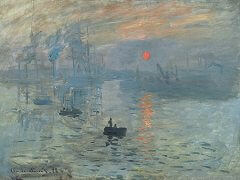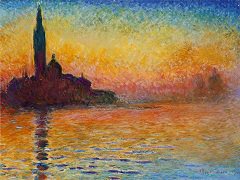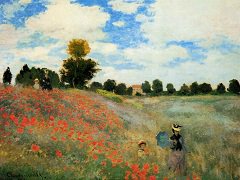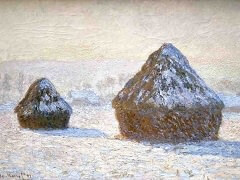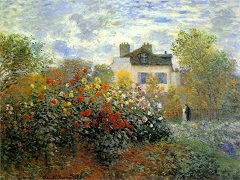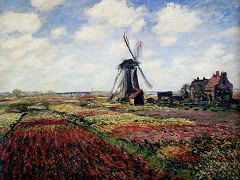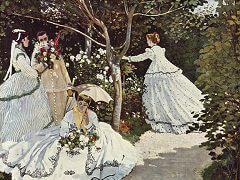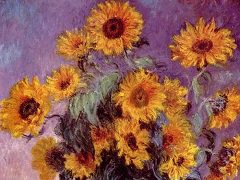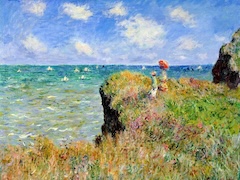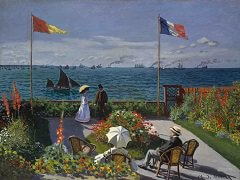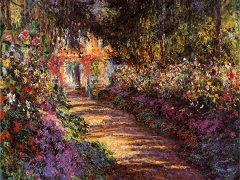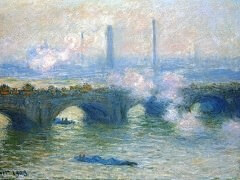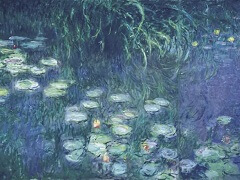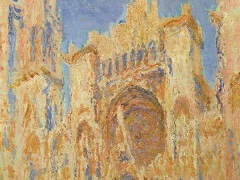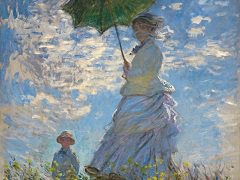Japanese Bridge, 1924 by Claude Monet
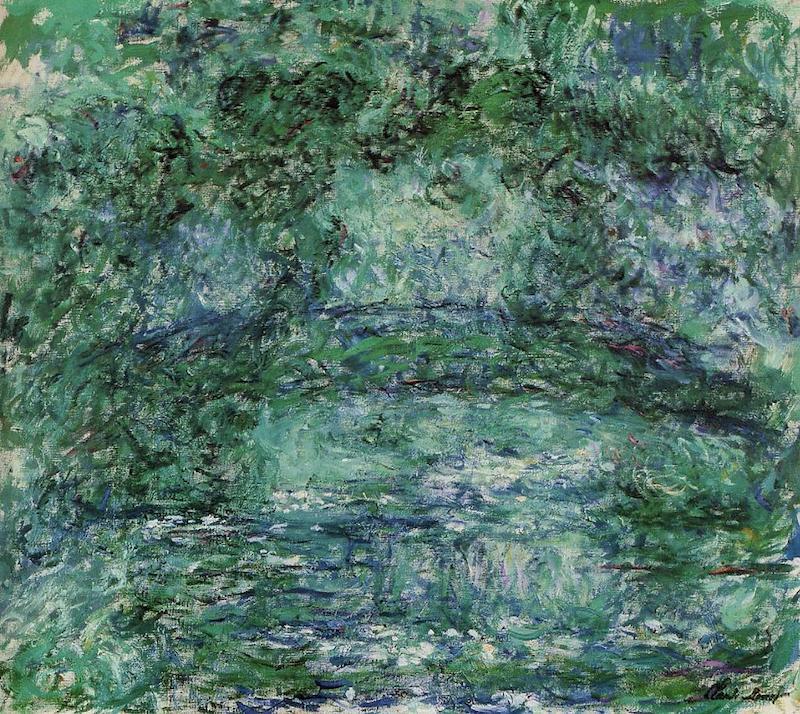
The colors and brushstrokes date this picture to the time that Monet was most affected by cataracts. His strong use of yellows and reds had been growing over the years as his sight declined. The effect of the chosen paints is to create a chaos of bright contrasting colors on the canvas from which the outline of the bridge emerges as a shadowy presence. This is in stark contrast to Le Bassin Aux Nympheas, (1919), which shows the same bridge harmonized in green and blue. The earlier painting was made before the introduction of the wisteria bower over the bridge, visible in Japanese Bridge, 1924 as a higher green line.
Even when studying the bridge and the foliage above it, Monet still sees some red and yellow so that brushstrokes in these strong colors are present in the greenest part of the painting. The artist's treatment of the bridge has changed to the point where the structure is not easy to distinguish. This is typical of the Expressionist response to nature that occurs more and more in Monet's work at this time. The angle he painted from is closer to the bridge than in the earlier work and the overall spatial structure still seen there has collapsed here.

